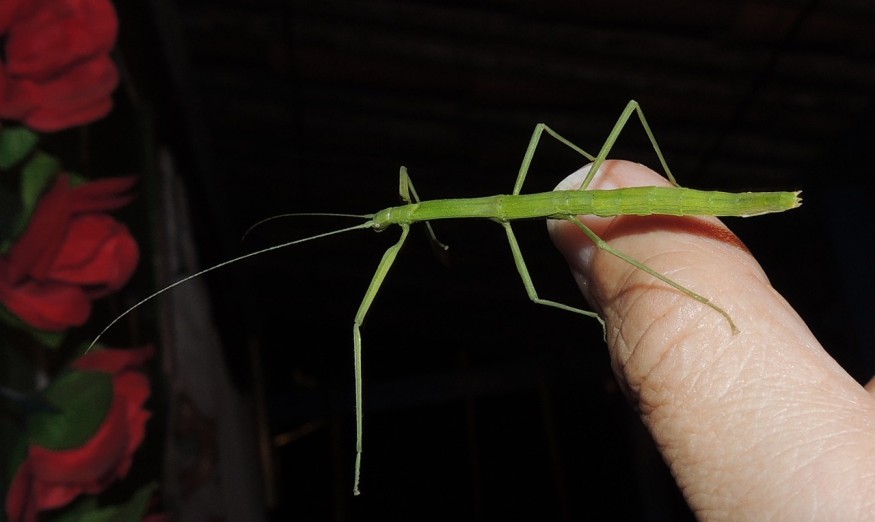A pet stick insect named Charlie surprised its owner Lauren Garfield when it shed its skin, revealing it to be dual-sex. The Natural history Museum confirmed the pet stick insect as the "first reported gynandromorph" of its species and called it a "particularly impressive specimen."
As MailOnline reported that Charlie was at home in Suffolk, shedding its skin when it revealed a bright green body of a female and the brown wings of a male. Garfield has now donated the stick insect to the London museum for further scientific research.

Owner Accidentally Breds Rare Dual Sex Stick Insect
Charlie, a green bean stick insect (Diapherodes gigantea), looked just an ordinary stick insect that Mrs. Garfield keeps and breeds at her home in Waldringfield, Suffolk until it sheds its skin. In a Facebook post, Mrs. Garfield wrote that she only recently knew that she accidentally bred a half male and half female stick insect.
She immediately contacted the experts at Natural History Museum, who were also intrigued by the unique stick insect. Charlie was sent to the Museu's phasmid insect expert Paul Brock via post to be examined.
"Stick-insects are popular pets, so they are sometimes posted to enthusiasts, including researchers. In this case, it was a speedy way to transfer the live insect, using next-day delivery. With food plant leaves, they travel well in the post," Brock told IFLScience.
He confirmed that Charlie is the first known gynandromorph green bean stick with both male and female characteristics. Brock said that it is the first time to be recorded in the Diapherodes gigantea species.
As seen in Mrs. Garfield's photos of Charlie, the insect has a bright green left side and features short forewings typical of a female insect stick, but it also has brown and longer forewings anyone would expect to see on a male. Charlie's case is rarely reported before and Mrs. Garfield is asked to write a journal article about it.
The Unique Case of Gynandromorphism
Gynandromorphismm came from the Greek words "gyne," which means female, and "andro," which means male. Gynandromorphs are organisms with both male and female tissues and often display observable characteristics of both sexes, according to Natural History Magazine.
They could either appear to be bilateral in which their sides are divided down in the middle into male and female, or they could be mosaic in which patches of characteristics of one sex appear in a body part that is characteristic of the other sex. Gynadromorphism could occur in insects, spiders, crustaceans, and birds.
Estimating how frequently they occur is difficult because they sometimes go unnoticed in species whose sexual dimorphism is less pronounced. But Brock cited a 1958 study that showed a 0.05% likelihood of the occurrence of gynandromorphs for the laboratory insect Carausius morosus.
As to why it happens, experts explained that the signals from the sex chromosomes inside the cell of higher-order animals that determine its sex might be modulated from outside by hormonal signals coming from the testes or ovaries.
These early hormonal actions during the embryo's developmental stage could have a permanent "organizational" effect on the organism's sexual differentiation that is activated later in life from hormones during puberty, pregnancy, and menopause.
RELATED ARTICLE : Rare Bird Has Half-Female and Half-Male Physical Characteristics
Check out more news and information on Insects in Science Times.
© 2025 ScienceTimes.com All rights reserved. Do not reproduce without permission. The window to the world of Science Times.












